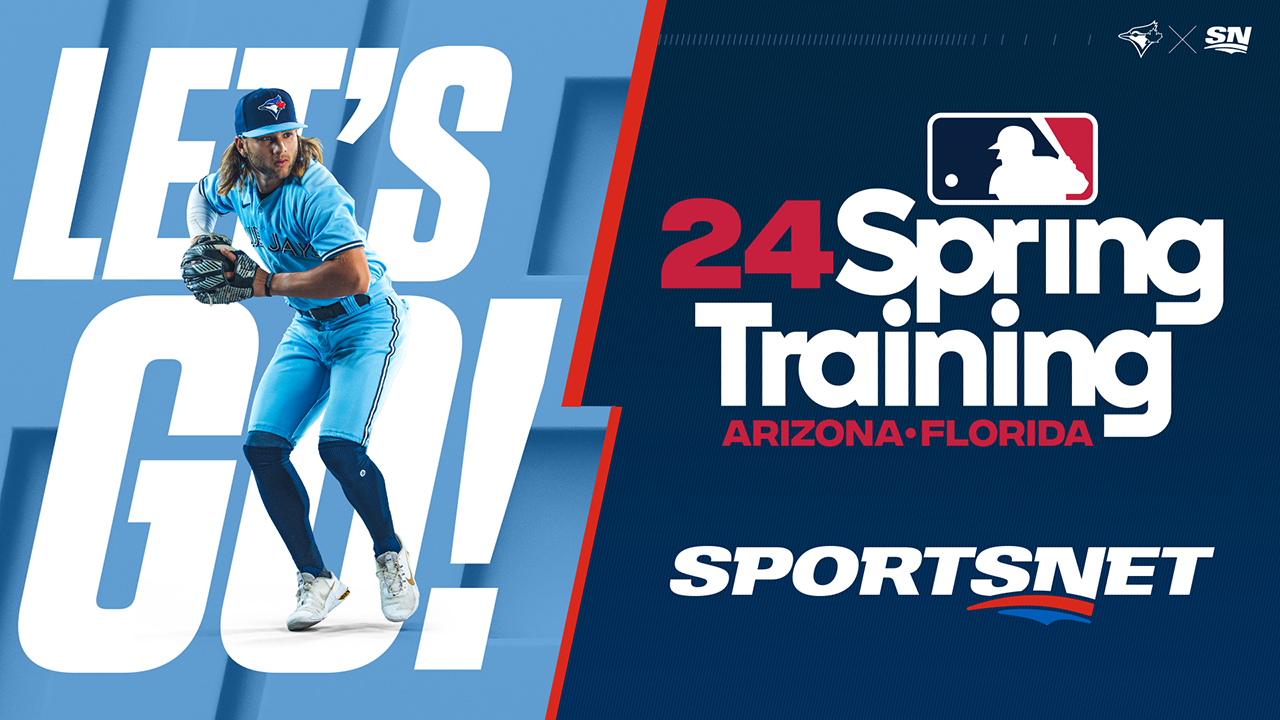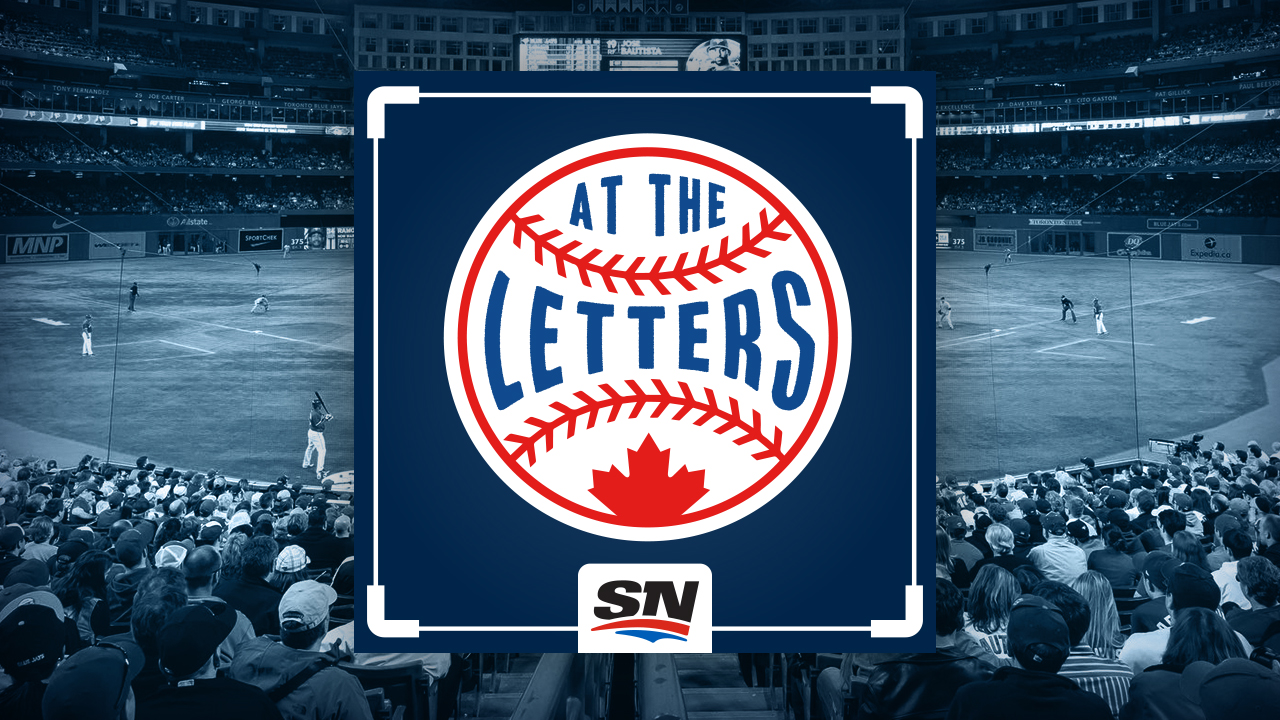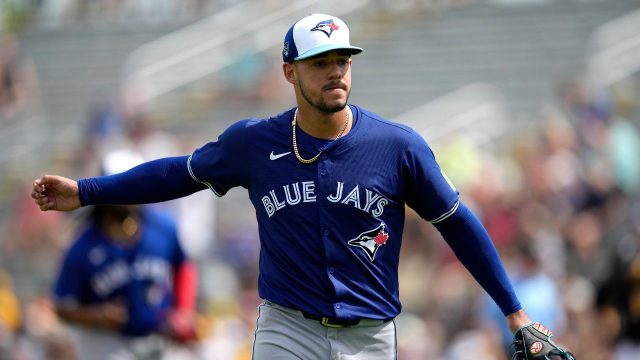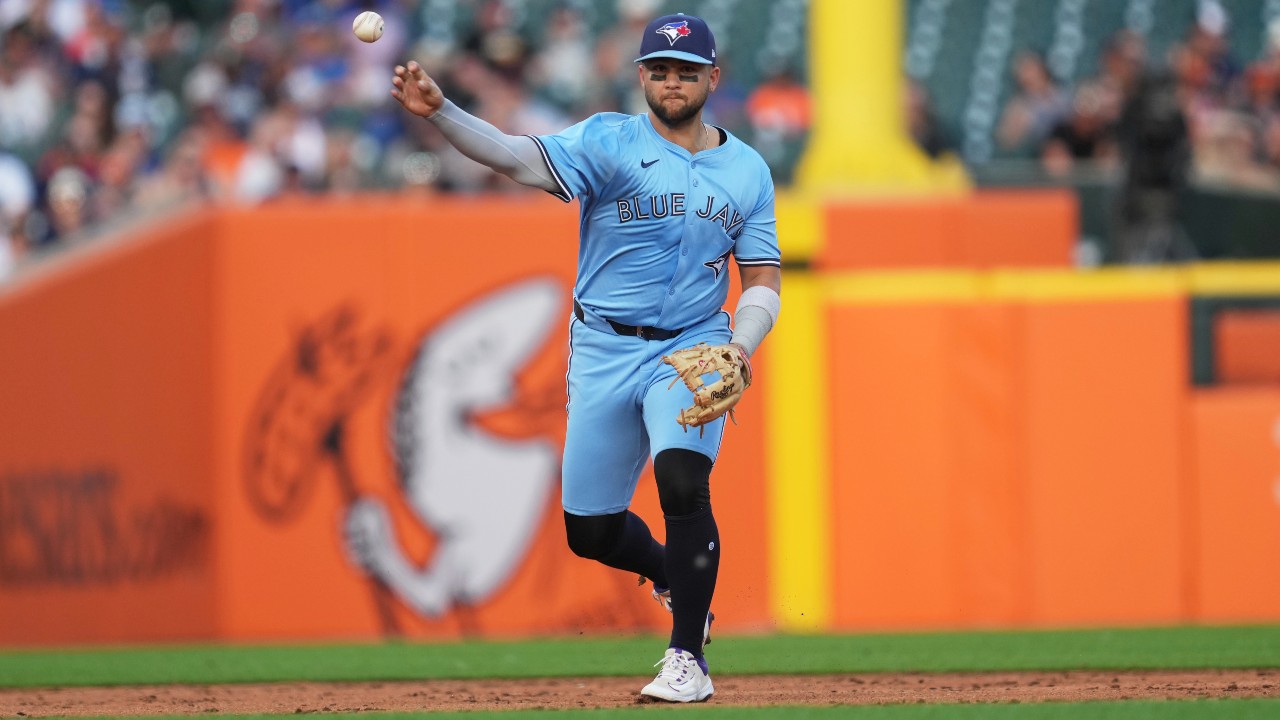
The version of Mitch White the Toronto Blue Jays have seen during spring training is not the same as the one who struggled badly with the team in 2023.
Unfortunately for the Blue Jays, that doesn’t mean the swingman has dominated in his 12.1 Grapefruit League innings. White has a 5.84 ERA to show for his efforts.
In the vast majority of cases when a guy who posted a 7.11 ERA in the majors last season — plus a 5.50 mark at Triple-A — comes back with shaky results the following spring, it’s an indication they don’t have much to offer. That may end up being the case with White, but hidden behind his uninspiring results is a reason for legitimate optimism: his newfound velocity.
Last season White threw 95 four-seam fastballs in the majors that averaged 93.9 m.p.h. So far in spring, 71 of his 73 tracked fastballs have exceeded that number as his average has shot up to 96.0 m.p.h.
Put another way, in his entire big-league career just three of White’s 1,289 heaters have been 97 m.p.h or harder. During spring training games he’s already met that benchmark 18 times.
White started to find this new juice near the end of his Triple-A season, producing a 1.78 ERA in his final six starts with 40 strikeouts in 30.1 innings, but according to Blue Jays manager John Schneider, the right-hander touching 98 is a new phenomenon.
For most of White’s career, he’s had OK stuff. He’s gotten by commanding his pitches while mixing and matching a repertoire that’s included five or six offerings — depending on the season. He’s been a swingman because his arsenal hasn’t afforded him consistent success as a starter or meaningfully played up in relief.
Now White’s situation has changed. He’s found the kind of velocity that could help him overpower hitters like never before. For a little context, his spring 96.0 m.p.h average would’ve ranked 19th among MLB starters last season.
He hasn’t quite been used as a traditional starter in Grapefruit League action as he’s built up, but on Sunday, he threw 70 pitches and from pitch 50 on, his heater still sat at 95.8 m.p.h. It’s fair to assume this is a velocity he can maintain over short starts or long relief outings — and possibly further. Even if his fastball sat a full tick lower at 95.0 m.p.h, that’s a mark only 34 starters topped in 2023.
This velocity is particularly important with White because the four-seamer has always been the weak link in his repertoire. Last season, his fastball ranked eighth-worst among all four-seamers by run value per 100 pitches (-5.0). The rest of his arsenal combined netted out at an average run value of 0.0.
Last year, White was a pitcher with an unimpressive fastball and a middle-of-the-pack collection of secondary pitches. That’s not a promising profile. Now, he looks like someone with a big fastball and a fine collection of other pitches that might even play up as hitters have to account for his heat.
That theory is being challenged by White’s unimpressive spring results.
Just as the right-hander has seemingly found the means to overcome some of his old struggles, a new one has emerged. White may have some new heat to play with, but it’s clear he’s not harnessing it yet.
His pitch heatmap on his four-seamers this spring looks like this:
That’s not total wildness by any means, but he’s missing high by a significant amount, and leaving plenty in the middle of the plate.
White has walked 10 batters in 12.1 spring innings, which is odd for a pitcher who’s never put more than eight hitters aboard in a three-start span in his MLB career. He seems to be adjusting to the new set of tools at his disposal.
Under different circumstances, the path forward with White would be clear. The 29-year-old is a perfect candidate to go down to Triple-A to provide some proof of concept that his new velocity will lead to improved results. That’s something he hasn’t managed in spring training with the regular season less than two weeks away.
The situation is muddled by a few factors.
Firstly, White is out of options, and the Blue Jays cannot send him to Triple-A without risking another team claiming him on waivers. That could be considered a likelihood, thanks to his velocity bump as he’d make a fine dart throw for a rebuilding team.
Toronto is also dealing with injuries to Alek Manoah and Kevin Gausman. Manoah won’t be back in time for the season’s start and if Bowden Francis takes his spot, then the Blue Jays would still need a spot starter for Gausman. The ace may make it back in time to slot into the bottom of Toronto’s rotation, but that’s not a certainty. Considering White is far more built up than Yariel Rodriguez, he’d be a logical fit to step in.
Another thing pushing White onto the roster is the lack of competition from relievers at the fringe of it. Entering spring training there was a chance that pitchers like Nate Pearson, Yosver Zulueta, Hagen Danner, Zach Pop and Connor Cooke would distinguish themselves, making the Blue Jays’ choices with White — and Trevor Richards — difficult. That hasn’t happened.
White has shown newfound potential, but he’s likely to be thrown into the fire at the MLB level again before the Blue Jays know whether his improved heat will make a profound difference.
He’s clearly a different guy than the one who just conceded more earned runs in 12.1 innings last season (10) than Tim Mayza did in 53.1 (9). Right now it’s tough to know how much of a paradigm shift White is in for — but it looks like the Blue Jays are about to find out.








